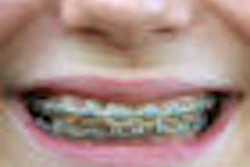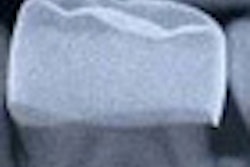Thin porcelain veneers cannot mask underlying tooth color even when different shades of resin cement are used, according to a study in Quintessence International (July-August, 2010, Vol. 41:7, pp. 567-573).
Researchers from the Academic Center for Dentistry Amsterdam wanted to determine the influence of natural dentin and resin cement colors on final color match of porcelain veneers.
They chose a preselected shade tab (A1) as the target color for a maxillary central incisor and measured its color parameters (CIE L*a*b* color scale) using a digital spectrophotometer. Nine natural dentin colors (Natural Die Material, Ivoclar Vivadent) representing a wide range of tooth colors were used to prepare resin replicas of the maxillary central incisor with a standard preparation for porcelain veneers.
The prepared porcelain veneers (IPS Empress Esthetic, A1, 0.6-mm thick, Ivoclar Vivadent) were cemented on the resin dies (nine groups of natural dentin colors) using seven shades of resin cement (Variolink Veneers, Ivoclar Vivadent). The values of the cemented veneers were measured, and DE values were calculated against the preselected target color. DE greater than 3.3 was considered as a significant color mismatch detectable by the human eye.
The researchers found that the seven shades of resin cement had no significant influence on the final color of the veneers, with the DE values almost identical for every test group. However, the color of natural dentin was a significant factor that influenced final color match, they noted. None of the 63 tested combinations produced an acceptable color match.
While thin porcelain veneers cannot mask underlying tooth color even when different shades of resin cement are used, incorporating high-chroma opaque porcelain may improve the final color match, the researchers concluded.
Copyright © 2010 DrBicuspid.com



















